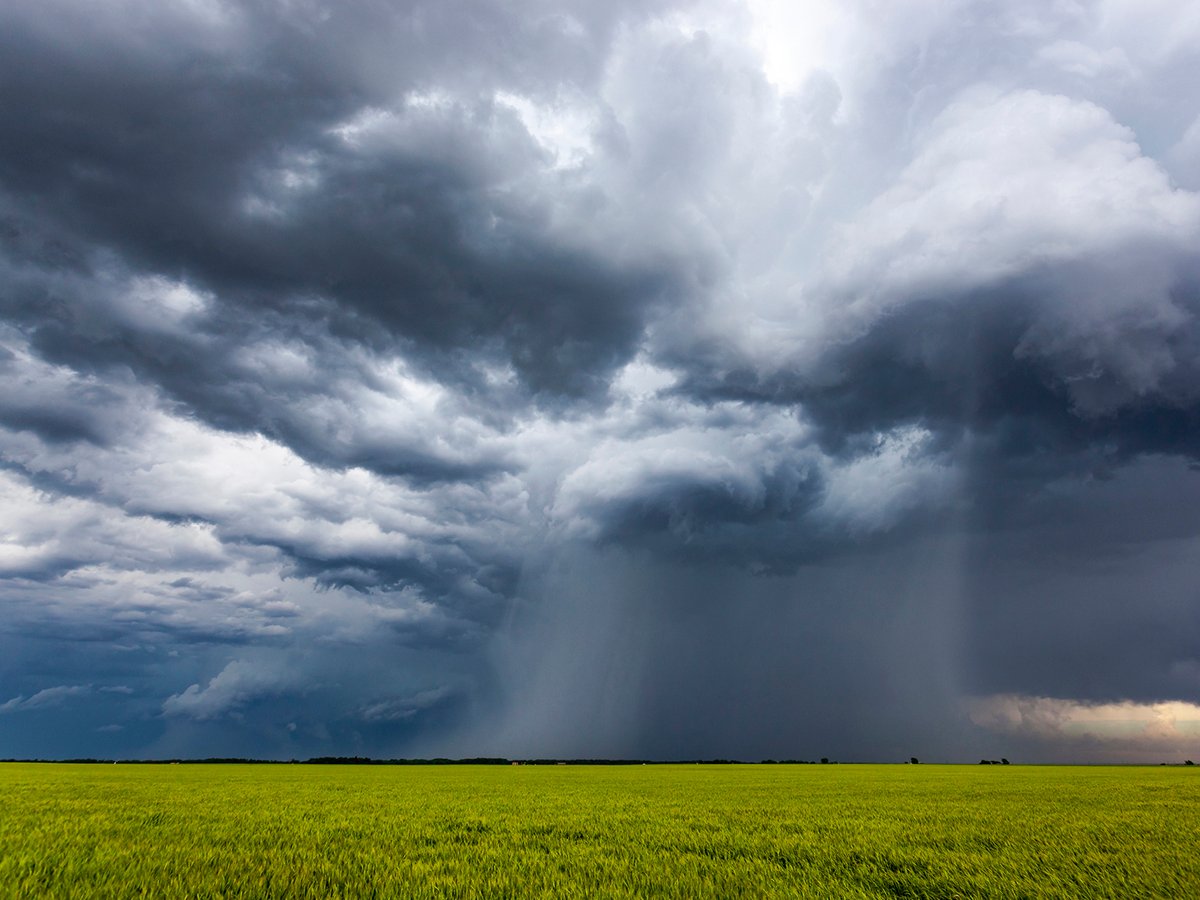LETHBRIDGE, Alta. – She left rural Alberta at age 15 and now works in the city to inform others about agriculture.
Brenda Hunik operates Encompass, a communications company that has worked extensively with groups like the Alberta Beef Producers and the Canadian Cattle Commission.
Despite hard times from bovine spongiform encephalopathy and a closed border, Hunik remains optimistic that agriculture has a world of opportunities in markets and trade.
Hunik predicted agriculture will grow and become more vertically integrated in future years. Consumer awareness about food products is also on the rise.
Read Also

Extreme rain increases as planet warms
In this issue, we are going to wrap up our look at extreme rainfall by examining the different weather patterns that tend to be associated with these rainfall events.
She believes her early connection to a mixed farm at Turin, Alta., gives her credibility to speak on agricultural issues. It also helps people listen to her as a woman speaking for the male-dominated cattle industry.
While men still tend to dominate the industry from the fields to the agricultural boards, she stressed the importance of women’s voices in the mix.
Women offer a different and broader point of view and are more likely to make decisions by consensus, by gathering information and talking, she said.
“They look at the context rather than just the content.”
Hunik built her home-based business in communications after working for an airline in marketing. The married mother of two moved the family from Calgary to Lethbridge to be closer to extended family and to live in a smaller city. That means half-hour or 15-hour days, depending on the workload.
In recent years, she picked up contracts to lobby on producers’ behalf to deal with American countervail and antidumping duties applied to Canadian cattle. She organized town hall meetings in Montana and worked with the public and the media.
“We created a dialogue between Montana and Alberta cattle guys,” she said.
The U.S. restriction was eventually lifted, and record numbers of feeder cattle moved over the next year. She felt the campaign into small town America played a role.
“We feel we had an influence,” she said.
Hunik actively monitors and tracks agricultural news for the Alberta Beef Producers and the Canadian Wheat Board.
She hesitated to guess when the U.S. border might open to Canadian cattle, and cited restrictions related to bluetongue and anaplasmosis as looming issues that could keep it closed even longer.
In addition to involvements with the Beef Information Centre, Alberta Beef Producers and the Edmonton Eskimos’ tailgate party promoting beef, she was also part of a public awareness campaign for intensive livestock operations in the Picture Butte region.
“It had turned quite contrary,” she said of the local atmosphere.
She organized conflict resolution workshops to allow the community, government, councillors, environmental specialists and livestock operators to meet and discuss concerns and learn more about local bylaws.
“The purpose was to get to the issues and see what changes could happen,” she said.
“There were a lot of assumptions versus how it was really done.”
It resulted in the county having to tighten guidelines to respond better to citizens’ concerns.
The distance to setbacks addressed concerns about roadways, traffic loads and managing manure spills from the trucks that travel through the region.
In one case, a producer responded to complaints by installing a sprinkler system to keep down manure smells, said Hunik.
It was highly productive, albeit tense, she conceded. But it was also rewarding for all and a good wake-up call for producers to re-examine some of their farm practices, Hunik said.
Picture Butte, Alta., feedlot and cow-calf operator John Kolk said Hunik helped producers see what the issues were, the messages they were sending out to the community and how to address them.
“She got producers to take a look at themselves as they’re perceived by others,” he said.
Her approach was a friendly, non-confrontational one to address the mounting tension between ILO operators, traditional longtime farmers and local acreage owners. That opened doors to discussing issues and addressing them, he said, citing changes in ILO bylaws.
“There needs to be some understanding of how farmers think,” said Kolk, who has also worked with Hunik in developing communications strategies for the Alberta environmental farm plan.
Kolk said Hunik brings a strategic approach to a communications plan, helping groups identify their goals and possible impacts of a project.
Hunik’s rural roots, connection to local producers and farm awareness helped create something workable, said Kolk.














